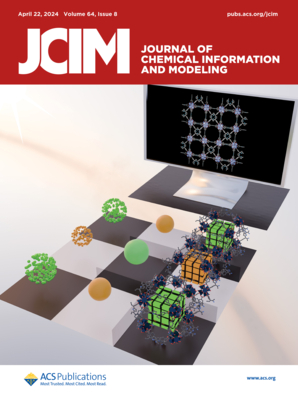Mechanistic Insights into the Binding of Different Antagonists to 5-HT1AR: A Molecular Docking and Molecular Dynamics Simulation Study.
IF 5.3
2区 化学
Q1 CHEMISTRY, MEDICINAL
引用次数: 0
Abstract
The serotonin 1A receptor (5-HT1AR) is involved in a wide range of physiological processes, and it has attracted considerable attention as an important target for developing new medicines. The antagonists of 5-HT1AR display therapeutic potential in depression and cognitive dysfunction, and the elucidation of their interaction with the receptor is crucial to understand pharmacological actions and develop novel therapeutic agents. Herein, we performed conventional molecular docking and molecular dynamics (MD) simulations to address the docking pose and binding mechanisms of six representative antagonists (way100635, way101405, lecozotan, nan190, sdz216-525, and nad299) to 5-HT1AR. We found that among the six antagonists, sdz216-525 exhibited the most negative docking score at -9.5 kcal/mol, while nad299 displayed the least negative score. The common pharmacophore aromatic group appeared in all six antagonists, and piperazine existed in the five antagonists except for nad299. MD simulation results showed that upon the addition of antagonists, the conformation of 5-HT1AR was changed to various extents, and the relative positions of transmembrane 3 (TM3), TM5, and TM6 underwent rearrangement. Among these antagonists, lecozotan exhibited the highest binding affinity to 5-HT1AR, whereas nad299 showed the weakest interaction. The molecular recognition of six antagonists by 5-HT1AR involved different binding patterns, with variable contributions from hydrophobic, H-bonding, cation-π/anion-π, and aromatic stacking interactions. Taken together, our computational study contributes to the understanding of the binding mechanism of antagonists to 5-HT1AR, which may facilitate the design of new antagonists targeting 5-HT1AR.不同拮抗剂与5-HT1AR结合的机制:分子对接和分子动力学模拟研究。
5-羟色胺1A受体(5-HT1AR)参与了广泛的生理过程,作为新药开发的重要靶点受到了广泛的关注。5-HT1AR拮抗剂在抑郁症和认知功能障碍中显示出治疗潜力,阐明它们与受体的相互作用对了解药物作用和开发新的治疗药物至关重要。在此,我们进行了常规的分子对接和分子动力学(MD)模拟,以研究六种代表性拮抗剂(way100635、way101405、lecozotan、nan190、sdz216-525和nad299)与5-HT1AR的对接姿态和结合机制。结果表明,sdz216-525负对接评分最高,为-9.5 kcal/mol, nad299负对接评分最低。6种拮抗剂中均存在共同药效团芳香基团,除nad299外,其余5种拮抗剂中均存在哌嗪。MD模拟结果显示,加入拮抗剂后,5-HT1AR的构象发生了不同程度的改变,跨膜3 (TM3)、TM5、TM6的相对位置发生了重排。在这些拮抗剂中,lecozotan与5-HT1AR的结合亲和力最高,而nad299的相互作用最弱。5-HT1AR对6种拮抗剂的分子识别涉及不同的结合模式,包括疏水、氢键、阳离子-π/阴离子-π和芳香堆叠相互作用。综上所述,我们的计算研究有助于理解拮抗剂与5-HT1AR的结合机制,这可能有助于设计针对5-HT1AR的新拮抗剂。
本文章由计算机程序翻译,如有差异,请以英文原文为准。
求助全文
约1分钟内获得全文
求助全文
来源期刊
CiteScore
9.80
自引率
10.70%
发文量
529
审稿时长
1.4 months
期刊介绍:
The Journal of Chemical Information and Modeling publishes papers reporting new methodology and/or important applications in the fields of chemical informatics and molecular modeling. Specific topics include the representation and computer-based searching of chemical databases, molecular modeling, computer-aided molecular design of new materials, catalysts, or ligands, development of new computational methods or efficient algorithms for chemical software, and biopharmaceutical chemistry including analyses of biological activity and other issues related to drug discovery.
Astute chemists, computer scientists, and information specialists look to this monthly’s insightful research studies, programming innovations, and software reviews to keep current with advances in this integral, multidisciplinary field.
As a subscriber you’ll stay abreast of database search systems, use of graph theory in chemical problems, substructure search systems, pattern recognition and clustering, analysis of chemical and physical data, molecular modeling, graphics and natural language interfaces, bibliometric and citation analysis, and synthesis design and reactions databases.

 求助内容:
求助内容: 应助结果提醒方式:
应助结果提醒方式:


